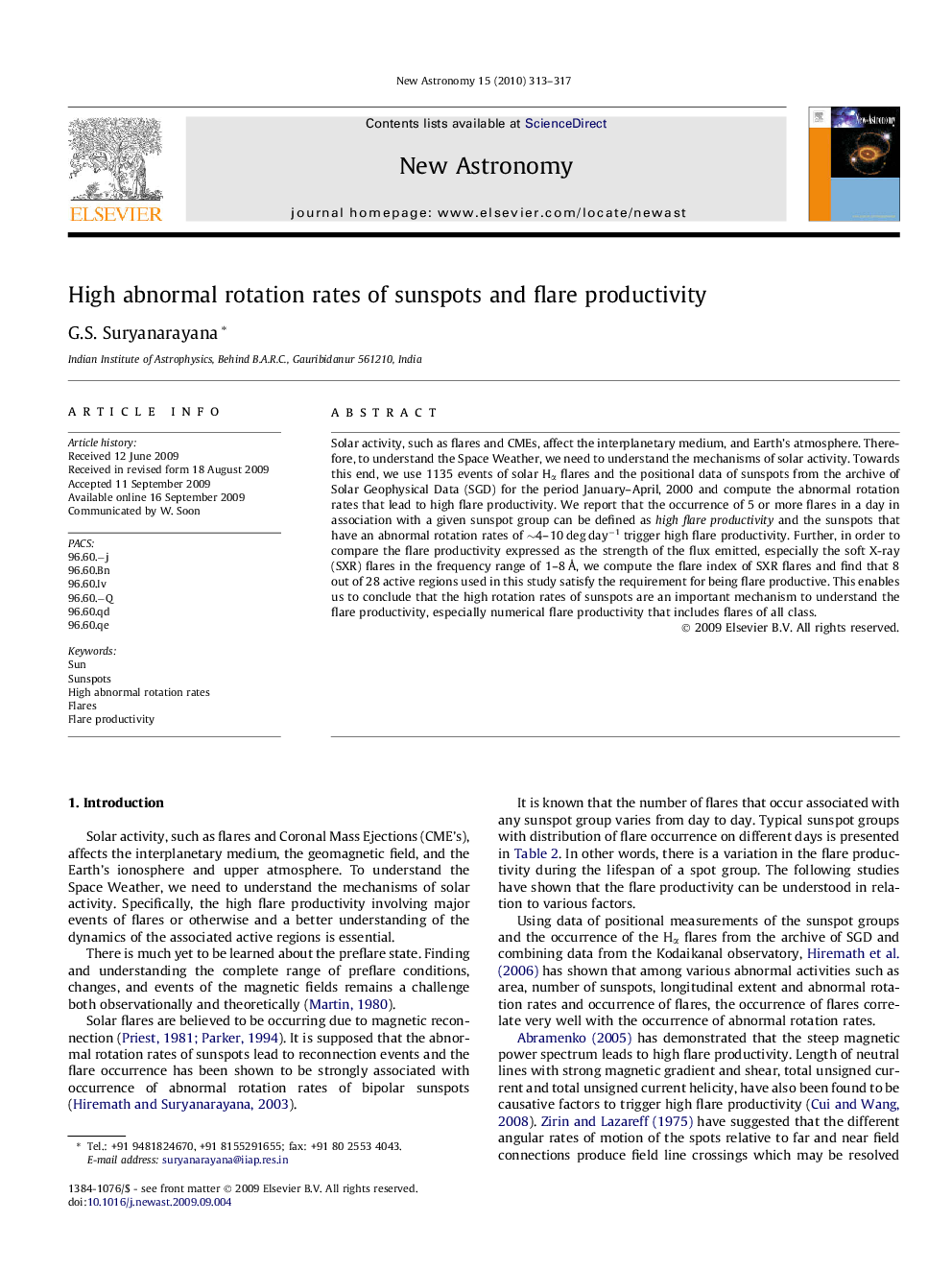| Article ID | Journal | Published Year | Pages | File Type |
|---|---|---|---|---|
| 1779761 | New Astronomy | 2010 | 5 Pages |
Solar activity, such as flares and CMEs, affect the interplanetary medium, and Earth’s atmosphere. Therefore, to understand the Space Weather, we need to understand the mechanisms of solar activity. Towards this end, we use 1135 events of solar Hα flares and the positional data of sunspots from the archive of Solar Geophysical Data (SGD) for the period January–April, 2000 and compute the abnormal rotation rates that lead to high flare productivity. We report that the occurrence of 5 or more flares in a day in association with a given sunspot group can be defined as high flare productivity and the sunspots that have an abnormal rotation rates of ∼4–10 deg day−1 trigger high flare productivity. Further, in order to compare the flare productivity expressed as the strength of the flux emitted, especially the soft X-ray (SXR) flares in the frequency range of 1–8 Å, we compute the flare index of SXR flares and find that 8 out of 28 active regions used in this study satisfy the requirement for being flare productive. This enables us to conclude that the high rotation rates of sunspots are an important mechanism to understand the flare productivity, especially numerical flare productivity that includes flares of all class.
